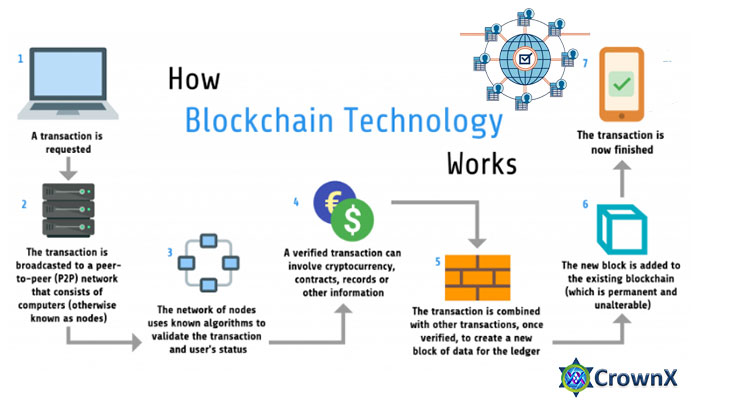
Blockchain technology operates as a groundbreaking system that redefines trust, security, and transparency in the digital realm. At its core, it is a decentralized and distributed digital ledger that records transactions in an unalterable and chronological sequence. Here's a detailed look into how blockchain technology works:
1. Decentralization:
Traditional systems rely on a central authority to validate and authenticate transactions. In contrast, blockchain is decentralized, meaning it operates on a network of nodes (computers) that collectively validate and agree upon transactions through consensus mechanisms.
2. Blocks and Transactions:
Transactions are grouped into blocks, forming a chain of blocks—hence the name "blockchain." Each block contains a list of transactions, a timestamp, and a reference to the previous block, creating a chronological order and an unbroken chain.
3. Consensus Mechanisms:
Nodes in the blockchain network must agree on the validity of transactions before they're added to the ledger. Various consensus mechanisms, like Proof of Work (PoW) or Proof of Stake (PoS), ensure agreement and prevent fraudulent activities.
4. Cryptographic Hashing:
Transactions within a block are combined and processed through a cryptographic hash function. This process creates a unique identifier (hash) for each block, linking them in a secure and tamper-resistant manner.
5. Immutability and Security:
Once a block is added to the chain, it's nearly impossible to alter or delete any part of it. Changing the information within a block would require changing every subsequent block, making manipulation highly computationally expensive and practically unfeasible.
6. Distributed Ledger:
Copies of the entire blockchain ledger are stored on each node within the network. This distribution ensures redundancy, enhances security, and prevents a single point of failure.
7. Smart Contracts (Optional):
Smart contracts are self-executing agreements with predefined rules. They automate processes and actions when specific conditions are met, eliminating the need for intermediaries.
8. Transparent and Public:
Most blockchain networks are public, allowing anyone to view the transactions and data. This transparency promotes trust and accountability within the network.
9. Private Blockchains (Optional):
In some cases, blockchain networks can be private or permissioned, where access is restricted to a specific group of participants. These are often used by enterprises to maintain confidentiality while benefiting from blockchain technology.
10. Transactions and Validation:
When a user initiates a transaction, it's broadcast to the network. The network's nodes validate and verify the transaction's legitimacy based on the consensus mechanism in place.
Blockchain technology offers a decentralized, secure, and transparent way to record and verify transactions. Its foundation in cryptography, consensus mechanisms, and distributed networks enables a wide range of applications, from financial transactions to supply chain management and beyond. As technology continues to evolve, so too will the ways we harness the power of blockchain for innovation and transformation.